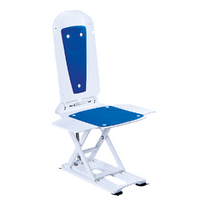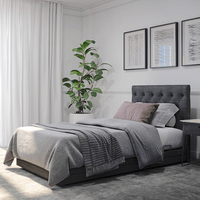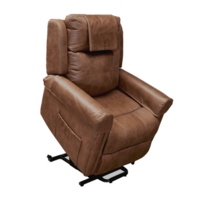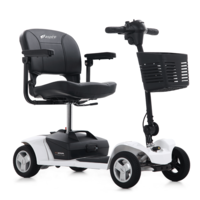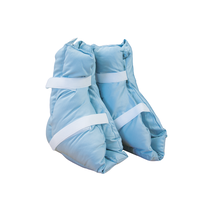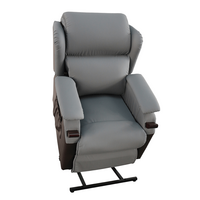Pressure Care Cushions and Positioning Aids
Pressure sores are areas of damage to the skin and underlying tissue caused by constant pressure to a specific area. A pressure sore is often caused by lying or sitting in the same position for prolonged periods of time. They can also be the result of friction or movement across a sensitive area.
Pressure injury management is important if you’re caring for someone with limited mobility or at a higher risk of developing pressure ulcers. Personal care, proper positioning and the use of appropriate pressure care equipment can all reduce or prevent pressure sores developing.
What causes pressure sores?
Pressure sores happen when the skin is compressed between two relatively firm surfaces for a long period of time, such as a bed and a bone inside the body. This causes blood supply to be cut off to that area, and the affected tissue becomes damaged.
Pressure sores frequently occur on bony areas of the body like the buttocks, hips, tailbone and heels as a result of lying or sitting in the same position. They can also appear on the back of the head.
Older people are more prone to developing pressure sores due to their thinner skin and lower muscle mass. But anyone who is unable to readjust their position can be susceptible to pressure sores.
Pressure care management at home
Changing position every two hours helps to prevent pressure sores from developing. This might mean shifting the side that someone is lying on, using cushions to prop or raise parts of the body, or moving from a lying to seated position.
In particular, avoid spending too much time lying directly on the hip bone or elbows as the skin here is particularly vulnerable.
Skincare is an important factor when it comes to pressure sore prevention. Damp, damaged or dry skin can increase someone’s risk of developing a pressure injury. And incontinence is one of the leading factors when it comes to pressure management. People who experience incontinence often also have difficulty adjusting their position independently. So making sure you have a plan to manage incontinence will also help to prevent pressure sores.
-
Use incontinence pads and waterproof sheets to keep skin, clothing and bedding dry
-
Cleanse the skin using a gentle cleanser and dry off before redressing after washing
-
Wear lightweight, breathable clothing to encourage good air flow around the body
-
Use moisturiser or speciality barrier cream to keep the skin supple and avoid it drying out
Pressure relief aids
Anyone who is confined to a bed or chair for extended periods and is unable to change their position independently is at risk of pressure sores. As a carer, it’s important that you incorporate pressure care management into your daily routine.
Pressure care products and positioning aids can help prevent or reduce the risk of pressure sores. These pressure relief aids are made from speciality materials to reduce friction on the skin and promote blood circulation.
Pressure care cushions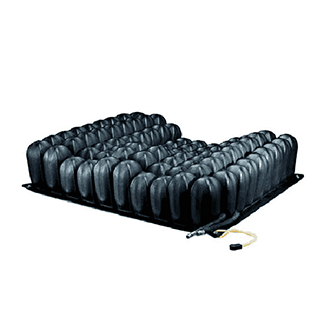
Pressure care cushions are available in foam, gel or air-filled and are designed to provide pressure relief and positioning while seated. A key benefit is the ability to move cushions between different seats or a wheelchair, providing support wherever needed.
Foam cushions are designed for people at a lower risk of developing pressure sores who might spend a couple of hours sitting in the same spot. Contoured memory foam cushions and a soft cover help absorb the user’s weight and distribute it more evenly.
Gel cushions offer an increased level of pressure relief for people who spend a lot of time seated or who have other health conditions that make them more susceptible to pressure sores. Because the gel filling doesn’t retain heat as much as foam cushions, they tend to be much cooler to sit on as well, adding another level of protection.
Air cushions, such as the ROHO range, work on the principle of immersion to distribute weight across a larger surface and reduce the risk of pressure injury. ROHO’s patented design uses a series of modular air cells that can be adjusted as the user’s shape and condition changes, helping to maintain blood flow and reduce pressure on contact points.
ROHO offers cushions suited for everyday comfort, through to those delivering high-level positioning support and postural correction.
Pressure relief chairs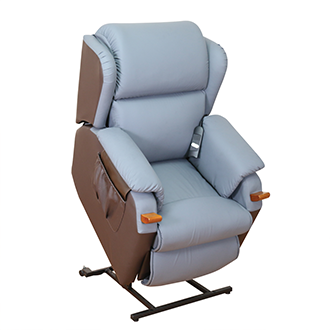
Pressure relief chairs, such as the Aspire Air Lift Chair, provide comfort and pressure relief. The lift chair is covered in a medical-grade upholstery that resists friction and is antimicrobial to protect the skin. Layers of foam and soft fibre are designed to provide a soft, breathable and supportive back support. The seating surface has a contoured air bladder to provide immersion and envelopment to effectively redistribute pressure, ideal for extended periods of sitting.
The recline action is operated by remote and enables the user to easily change position, helping to improve circulation and relieve pressure on the lower back and legs.
Pressure relief mattresses
People living at home who spend extended periods of time in bed are at an increased risk of developing pressure sores. They may find it difficult to regularly change positions without help and standard mattresses may not provide suitable pressure care.
Pressure care mattresses are made using layers of speciality foam that provide weight redistribution and comfort for extended periods of time. The flexible foam mattress is designed for use on standard and high-low beds to ensure comfort in all positions. Covered with a waterproof cover to reduce friction and keep the skin dry.
If the person you care for is at high risk of developing a pressure injury contact your GP and allied health professional (occupational therapist or physiotherapist) for advice.
Heel protector boot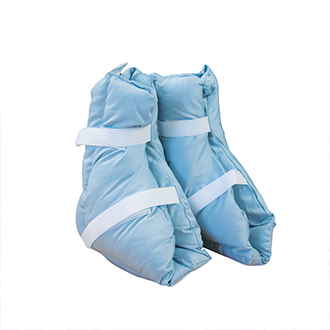
Along with the lower back and hips, heels are also particularly susceptible to pressure sores. This is due to sustained pressure of the feet pressing into a mattress in combination with the small area of skin covering the heel.
A heel protector boot is designed to relieve the pressure on the heel area and redistribute it along the lower leg. These protective boots are made from a silicone fibre inner covered in soft cotton to promote air flow and avoid overheating.
For more help choosing the right positioning and pressure care cushions, speak with the team at Mobility HQ.

















